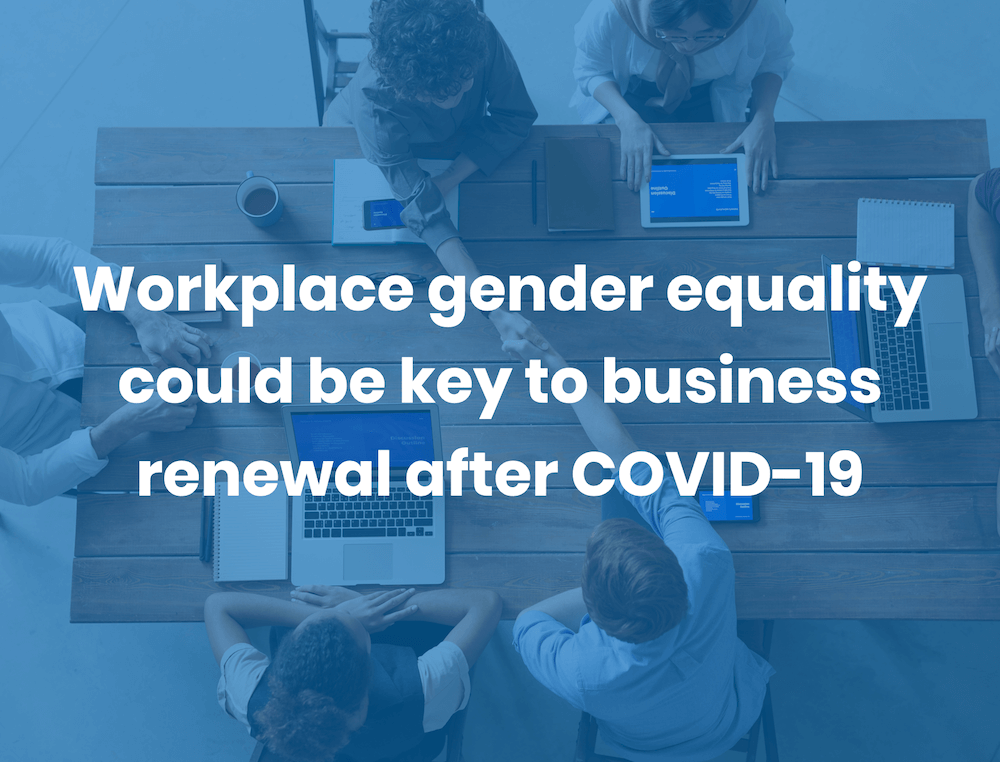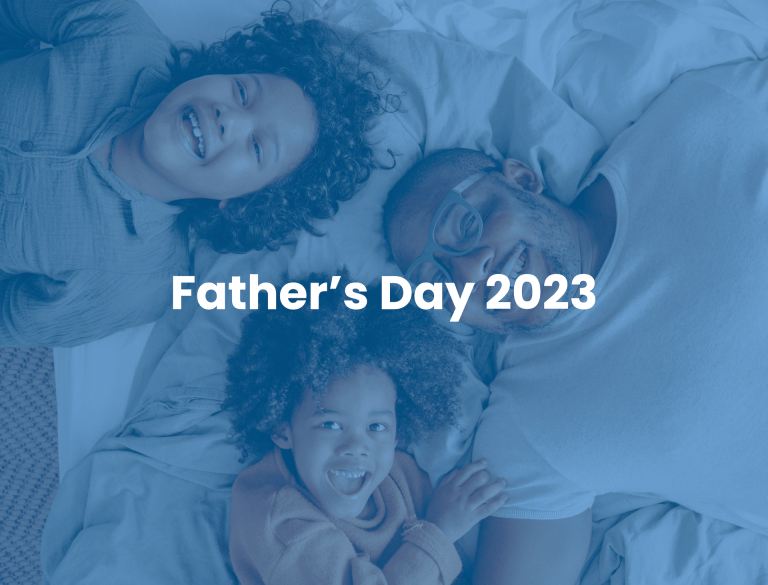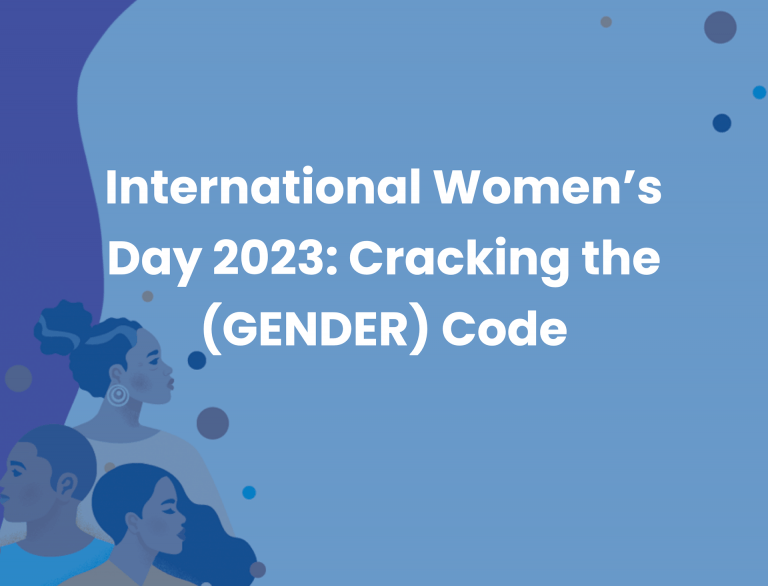Workplace gender equality could be key to business renewal after COVID-19
Workplace gender equality gains are going backwards in the chaos of COVID-19. Here’s how we can stop the decline – and why prioritising equality in the workplace can supercharge your organisation’s post-pandemic growth.
 COVID-19 has done more than just rock the economic boat – it’s almost capsized it. Organisations are grappling with shrinking margins, interrupted supply chains and the shuttering of entire industries, while many employees face the threat – or reality – of redundancies and pay cuts.
COVID-19 has done more than just rock the economic boat – it’s almost capsized it. Organisations are grappling with shrinking margins, interrupted supply chains and the shuttering of entire industries, while many employees face the threat – or reality – of redundancies and pay cuts.
With so many companies shifting their focus to surviving, rather than thriving, workplace gender equality has been relegated to the backburner. The fact that women are bearing the brunt of both the professional disruptions and increased domestic and caregiving responsibilities driven by the pandemic is an inevitable outcome – or is it?
For many organisations, staying focused on workforce diversity may seem like a big ask in the face of Australia’s most significant economic challenge since the 1990s. However, with research showing that workplace diversity is “critical for business recovery, resilience, and reimagination” in the aftermath of COVID-19, it’s vital that we put gender equality back on the agenda.
Crunching the numbers on COVID-19 inequalities
 First, some facts: according to the Australian Bureau of Statistics, women have experienced a much higher rate of job loss than men (8.0 per versus 6.3 per cent) as a result of COVID-19 disruption. Dr Richard Denniss, the chief economist at the Australia Institute, says there is “clear evidence that women are disproportionately losing jobs and incomes”, with the number of women employed between March and April decreasing by 5.3 per cent and the number of work hours falling by 11.5 per cent, compared to 3.9 per cent and 7.5 per cent respectively for men.
First, some facts: according to the Australian Bureau of Statistics, women have experienced a much higher rate of job loss than men (8.0 per versus 6.3 per cent) as a result of COVID-19 disruption. Dr Richard Denniss, the chief economist at the Australia Institute, says there is “clear evidence that women are disproportionately losing jobs and incomes”, with the number of women employed between March and April decreasing by 5.3 per cent and the number of work hours falling by 11.5 per cent, compared to 3.9 per cent and 7.5 per cent respectively for men.
On the home front, the pandemic is worsening an already bad situation – in normal circumstances, according to the Harvard Business Review, women face a ‘motherhood penalty’ in which their opportunities for advancement are hindered by their visible role as caregivers for children or other family members. And this ‘visible caregiving’ has only increased in the face of COVID-19 – while school and workplace closures at first presented an opportunity for men to take on an increased proportion of domestic responsibilities, early data shows that women are still providing the lion’s share of childcare, homeschooling and housework. It’s a juggle that’s inevitably made many women less productive, and to appear less reliable when compared to their male peers. This has the potential to become a self-fulfilling prophecy – when redundancies are unavoidable, who do you choose to let go?
Putting gender back on the agenda post COVID-19
If it feels like workplace gender equality is going backwards, it’s far from an inevitable outcome. As an executive, HR professional or D&I leader, you have the power to change these patterns by re-prioritising workplace diversity initiatives, even during this challenging time. And it isn’t just a question of doing the right thing by female employees (although that’s important too) – it’s a fact, that gender diversity in the workplace delivers good business outcomes.
 As is well established, companies with executive teams comprised of more than 30 percent women are more likely to outperform those with lower ratios, with a 48 per cent increased likelihood of outperformance between the companies with the most gender-diverse workforces compared to those with the least, according to McKinsey’s Diversity wins: How inclusion matters report. Gender diversity is also strongly linked to better organisational health. With businesses now focused on survival, a commitment to gender diversity may seem like a lesser priority – but re-committing to diversity and inclusion could be the key to future growth and renewal for your business.
As is well established, companies with executive teams comprised of more than 30 percent women are more likely to outperform those with lower ratios, with a 48 per cent increased likelihood of outperformance between the companies with the most gender-diverse workforces compared to those with the least, according to McKinsey’s Diversity wins: How inclusion matters report. Gender diversity is also strongly linked to better organisational health. With businesses now focused on survival, a commitment to gender diversity may seem like a lesser priority – but re-committing to diversity and inclusion could be the key to future growth and renewal for your business.
Here are three steps to putting gender back on the agenda post-COVID-19:
- First, ensure your CEO and leadership team are aware of both the benefits of diversity and the gendered impact of the pandemic—engaging senior leaders is critical.
- Second, listen and learn from those who have been disproportionately impacted – the women in your firm, particularly single parents.
- Recognise that those who are not directly impacted by inequities are sometimes blind to their impact. Facilitate honest conversations with the men and women in your leadership ranks. Openly identify challenges and collectively surface solutions to restoring gender equality initiatives.
These conversations can be challenging, even uncomfortable for some. But it’s through courageous conversations such as these where we see the greatest possible progress in the shortest period of time.
To learn more about authentically engaging men and putting gender back on the agenda post-COVID-19, get in touch with us directly.







